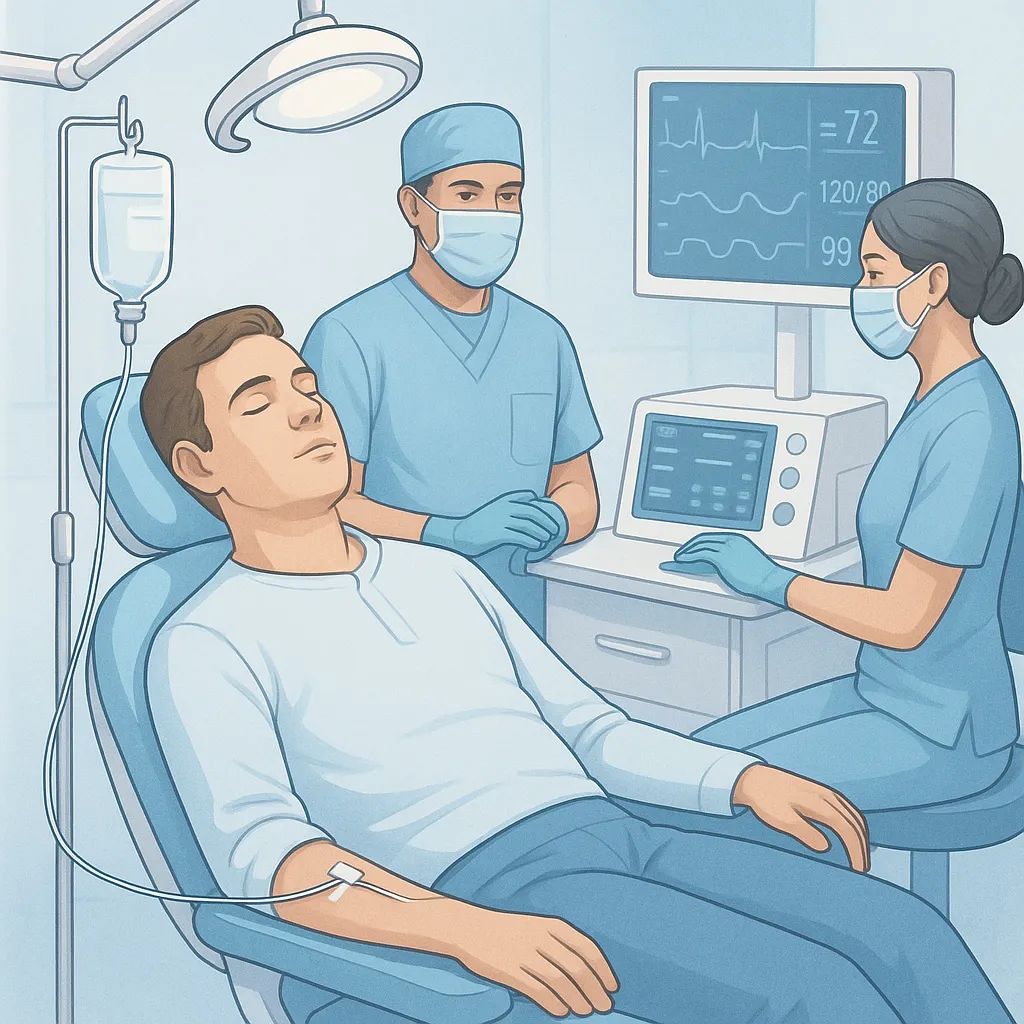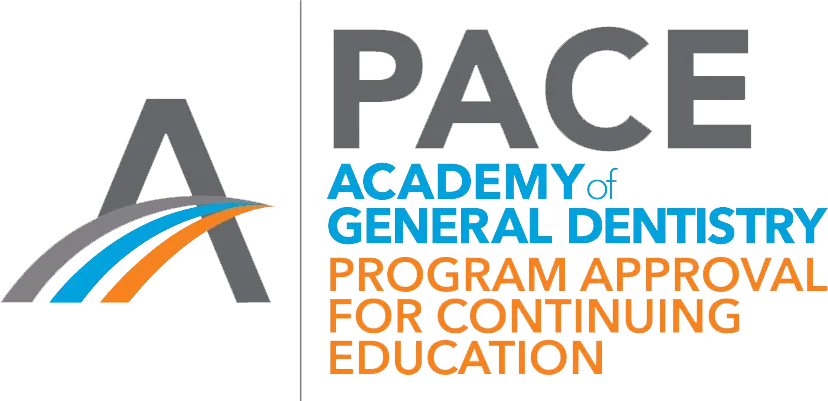
What is IV Sedation Training for Dentists? The Complete Guide to Transforming Your Practice
By Dr. Heath Hendrickson, Western Surgical & Sedation
If you're a general dentist who's been referring anxious patients to oral surgeons or watching potential revenue walk out your door, you've likely wondered: "What exactly is IV sedation training for dentists, and could it transform my practice?"
The answer might surprise you. IV sedation training for dentists isn't just another continuing education course—it's a complete practice transformation system that can add $200,000+ in annual revenue while providing patients with the comfortable, anxiety-free dental care they desperately need.
What is IV Sedation Training for Dentists?
IV sedation training for dentists is specialized continuing education that teaches general dentists how to safely administer intravenous moderate sedation to patients during dental procedures. This comprehensive training combines pharmacology, patient monitoring, emergency management, and hands-on clinical experience to prepare dentists for safe sedation practice.
Unlike basic sedation methods like nitrous oxide, IV moderate sedation allows patients to remain conscious but deeply relaxed, making it possible to perform complex procedures on even the most anxious patients. For general dentists, this training opens the door to keeping cases in-house that were previously referred out to specialists.
The Growing Demand for Dental Sedation
Recent studies show that over 36% of adults experience dental anxiety, with 12% suffering from extreme dental phobia. These patients often delay or avoid treatment entirely, creating a massive underserved market. Meanwhile, practices that offer IV sedation report:
300-400% increase in case acceptance for complex procedures
$150,000-$300,000 additional annual revenue
Significantly higher patient satisfaction scores
Reduced cancellation and no-show rates
Types of Dental Sedation Training Available
1. Minimal Sedation (Level 1)
Method: Oral medications (pills)
Training Requirements: 7-16 hours of education
Patient State: Relaxed but fully conscious
Procedures: Basic cleanings, simple fillings
2. Moderate Sedation (Level 2) - IV Sedation
Method: Intravenous medications
Training Requirements: 60+ hours including live patient experience
Patient State: Deeply relaxed, may not remember procedure
Procedures: Extractions, root canals, implant placement, multiple procedures
3. Deep Sedation/General Anesthesia
Method: Advanced IV medications or gas
Training Requirements: Anesthesia residency or extensive hospital training
Patient State: Unconscious
Scope: Typically limited to oral surgeons and anesthesiologists
Most general dentists pursuing sedation training focus on moderate sedation (IV sedation) because it offers the optimal balance of patient comfort, safety, and practice profitability.
What Does IV Sedation Training Include?
Core Curriculum Components
1. Pharmacology and Drug Selection
Sedative medications and their interactions
Dosing protocols for different patient types
Reversal agents and emergency medications
Patient-specific considerations (age, weight, medical conditions)
2. Patient Assessment and Selection
Pre-sedation medical evaluation
Risk stratification systems
Contraindications and relative contraindications
Informed consent procedures
3. Monitoring and Safety Protocols
Vital sign monitoring equipment
Capnography and pulse oximetry
Recognition of sedation levels
Documentation requirements
4. Emergency Management
Airway management techniques
Recognition and treatment of complications
CPR and ACLS protocols
Emergency medication administration
5. Legal and Regulatory Requirements
State dental board regulations
Permit application processes
Continuing education requirements
Record-keeping and documentation
Hands-On Clinical Training
The most critical component of quality IV sedation training is live patient experience. Programs like Western Surgical & Sedation's approach include:
Direct patient care under expert supervision
IV insertion practice with real patients
Sedation level management in clinical settings
Emergency scenario training with actual equipment
Case complexity progression from simple to advanced
IV Sedation Training Requirements by State
State requirements for IV sedation permits vary significantly, but most follow the American Dental Association Guidelines which recommend:
Standard Requirements:
60 hours of didactic education
20 live patient sedation experiences
Current ACLS certification
Facility requirements and inspections
Continuing education for permit renewal
State-Specific Variations:
California:
60 hours didactic + 20 live patients
Separate pediatric endorsement available
Annual permit renewal required
Texas:
60 hours education + 20 cases
Facility inspection required
15 hours CE every 2 years
Florida:
24 hours didactic + 10 live patients (minimum)
ACLS required
Biennial renewal
New York:
60 hours + 20 cases
Hospital privileges may be required
Annual renewal
Always verify current requirements with your state dental board, as regulations can change.
Choosing the Right IV Sedation Training Program
What to Look for in Quality Training
1. Instructor Experience and Credentials The quality of your training is directly related to your instructor's real-world experience. Look for:
Active sedation practice (not just theoretical knowledge)
Years of sedation experience
Number of cases performed
Teaching track record
For example, Dr. Heath Hendrickson at Western Surgical & Sedation has safely performed over 60,000 sedations and removed 250,000+ third molars under IV sedation—providing unmatched real-world expertise.
2. Live Patient Experience Quality Not all hands-on training is created equal:
Patient-to-instructor ratios (2:1 is optimal)
Case complexity variety
Direct supervision level
Number of procedures performed
3. Comprehensive Curriculum Ensure the program covers:
Complete pharmacology education
Emergency management training
State permit application assistance
Post-training support and mentorship
4. Post-Training Support Quality programs provide ongoing support:
Equipment setup guidance
Troubleshooting assistance
Continuing education opportunities
Peer network access
Red Flags to Avoid
Online-only programs without live patient experience
Inadequate instructor supervision during clinical training
No emergency training or ACLS requirements
Unrealistic promises about ease or income potential
Lack of state permit guidance
The Business Case for IV Sedation Training
Revenue Impact Analysis
Average Practice Transformation:
Investment: $15,000-$20,000 for quality training
Equipment Setup: $25,000-$40,000 for monitoring and safety equipment
Payback Period: 6-12 months
Annual Revenue Increase: $150,000-$300,000+
Real Dentist Success Story:
"When I came to this course, my goal was to really clean up my surgical skills. I was already taking wisdom teeth out, but I wanted to go somewhere where I could refine those techniques. Dr. Hendrickson has so much experience.. and it was all here in the states. They over exceeded my expectations!"
- Dr. Glenn Vo, Flower Mound, TX
"If you are not doing wisdom teeth, I would encourage you to come and take this course, because I think you would be surprised what you can do with a little bit of training. A lot of the cases you are sending out you can easily do yourself. The first case they gave me after some instruction I think I did in about half the time I normally do....It has been a great experience, absolutely great!"
- Dr. Daniel Binkowski, Story City, IA
Competitive Advantages
Practices offering IV sedation gain significant market advantages:
1. Patient Retention
Keep anxious patients in-house
Reduce referral dependency
Increase patient loyalty through comfort
2. Case Acceptance Rates
Patients accept treatment they previously avoided
Higher acceptance of comprehensive treatment plans
Reduced price sensitivity for comfort services
3. Practice Differentiation
Stand out from competitors who only offer basic care
Attract patients specifically seeking sedation options
Build reputation as "the comfortable dentist"
4. Scheduling Efficiency
Complete multiple procedures in single appointments
Reduce number of visits needed
Improve practice productivity
Safety Considerations and Risk Management
Modern IV Sedation Safety Profile
Contrary to outdated perceptions, modern IV sedation is remarkably safe when performed by properly trained dentists:
Serious adverse events: Less than 0.01% when protocols are followed
Patient satisfaction rates: Consistently above 95%
Malpractice insurance: Most carriers cover trained practitioners
Essential Safety Protocols
Pre-Sedation Requirements:
Comprehensive medical history review
Vital signs assessment
Fasting guidelines compliance
Informed consent documentation
During Sedation Monitoring:
Continuous pulse oximetry
Blood pressure monitoring every 5 minutes
Capnography when available
Visual and verbal patient assessment
Emergency Preparedness:
Reversal agents immediately available
Emergency medications on-site
Airway management equipment ready
Staff trained in emergency protocols
Risk Mitigation Strategies
Patient Selection Guidelines:
ASA Class I and II patients (healthy to mild systemic disease)
Avoid high-risk medical conditions initially
Gradual case complexity progression
Maintain conservative approach
Continuing Education:
Regular emergency training updates
Advanced airway management courses
Pharmacology update seminars
Peer consultation networks
Implementation Timeline: From Training to Practice
Phase 1: Pre-Training Preparation (1-2 months)
Research state requirements
Select training program
Obtain ACLS certification
Plan practice logistics
Phase 2: Training Completion (1 week intensive)
Complete didactic coursework
Perform supervised live patient cases
Practice emergency scenarios
Receive certification
Phase 3: Permit Application (2-4 weeks)
Submit state application with training documentation
Schedule facility inspection if required
Purchase monitoring equipment
Train staff on protocols
Phase 4: Practice Launch (1-2 months)
Start with simple cases
Gradually increase complexity
Monitor outcomes closely
Refine protocols based on experience
Phase 5: Practice Optimization (ongoing)
Market sedation services
Track financial outcomes
Pursue continuing education
Consider advanced techniques
Common Myths and Misconceptions
Myth 1: "IV Sedation is Too Risky for General Practice"
Reality: Modern IV sedation has an excellent safety profile when performed by properly trained dentists. The key is appropriate training, patient selection, and adherence to safety protocols.
Myth 2: "Online Training is Sufficient"
Reality: IV sedation requires hands-on experience with live patients. Online components can supplement but never replace clinical training.
Myth 3: "Malpractice Insurance Won't Cover Sedation"
Reality: Most malpractice carriers cover properly trained and certified practitioners. Some may increase premiums modestly, but the revenue increase far exceeds additional costs.
Myth 4: "Patients Won't Pay for Sedation"
Reality: Anxious patients readily pay sedation fees for comfort. Many practices find patients less price-sensitive when sedation is involved.
Myth 5: "It Takes Years to Become Profitable"
Reality: Most practices see positive ROI within 6-12 months when properly trained and marketed.
The Western Surgical & Sedation Advantage
At Western Surgical & Sedation, we've refined IV sedation training based on over 15 years of experience and 60,000+ successful sedations. Our unique approach combines:
Unmatched Experience
Dr. Heath Hendrickson: 250,000+ extractions under IV sedation
Real-world expertise: Active practice, not just theoretical knowledge
Proven track record: 1,000+ dentists successfully trained
Superior Training Method
2:1 patient-to-instructor ratio for personalized attention
Live patient experience with actual procedures, not simulations
Progressive case complexity building confidence systematically
Complete permit pathway guidance for all 50 states
Ongoing Support System
Post-training mentorship for implementation questions
Equipment setup guidance for optimal practice configuration
Marketing support to promote sedation services effectively
Alumni network access for peer consultation
Comprehensive Curriculum
Our program exceeds ADA guidelines with:
80+ hours of education (including pre-course study)
20+ live patient experiences under direct supervision
Emergency management certification included
Business implementation training for practice success
Is IV Sedation Training Right for Your Practice?
Ideal Candidates for IV Sedation Training:
Practice Characteristics:
Established general practice (3+ years)
Currently referring anxious patients out
Interest in procedure-focused dentistry
Commitment to continuing education excellence
Personal Qualities:
Detail-oriented approach to patient care
Comfort with medical procedures
Dedication to safety protocols
Desire for practice differentiation
Financial Readiness:
Ability to invest in training and equipment
Understanding of 6-12 month payback period
Commitment to proper implementation
Warning Signs You're Not Ready:
Looking for "quick money" without safety focus
Unwilling to follow protocols strictly
Insufficient commitment to ongoing education
Practice instability or major transitions pending
Next Steps: Your Path to IV Sedation Success
If you're ready to transform your practice with IV sedation training, here's your action plan:
Immediate Actions (This Week):
Download our Complete Course Guide to understand program details
Verify your state's permit requirements for current regulations
Assess your practice readiness using our evaluation checklist
Schedule a consultation to discuss your specific situation
Short-term Planning (Next Month):
Complete ACLS certification if not current
Research equipment options and budget requirements
Discuss with staff about protocol changes and training needs
Plan training timeline around practice schedule
Long-term Commitment (Next 6 Months):
Complete comprehensive training program
Obtain state sedation permit
Implement safety protocols and staff training
Launch sedation services with conservative case selection
Track outcomes and optimize protocols
Conclusion: The Future of Comfortable Dentistry
IV sedation training for dentists represents more than just another skill set—it's a gateway to providing the kind of comfortable, comprehensive dental care that patients desperately need and readily pay for.
In an era where patient anxiety remains a significant barrier to dental health, dentists who master IV sedation position themselves as solutions providers rather than simply tooth fixers. They become the practitioners that anxious patients specifically seek out, the ones who can provide care that was previously impossible.
The statistics don't lie:
Over 36% of adults experience dental anxiety
Practices with sedation capability see 300-400% increased case acceptance
Average revenue increases of $150,000-$300,000 annually
Patient satisfaction rates consistently above 95%
But perhaps most importantly, IV sedation training allows you to practice dentistry the way it should be practiced—without patient fear, without rushed appointments, and without the constant frustration of watching treatable cases walk out your door.
The question isn't whether IV sedation training works (the evidence is overwhelming). The question is whether you're ready to join the thousands of dentists who have already transformed their practices and their patients' lives through the power of comfortable dentistry.
Your patients are waiting. Your practice is ready. The only question is: Are you?
Ready to Learn More?
Download our Complete IV Sedation Training Course Guide and discover:
Detailed curriculum breakdown and learning objectives
State-by-state permit requirements and application processes
Equipment recommendations and setup guidance
Financial planning worksheets and ROI calculators
Success stories from practicing sedation dentists
Answers to the 25 most common training questions
Download Your Free Course Guide Now →
Or schedule a personal consultation with Dr. Heath Hendrickson to discuss your specific practice situation and sedation training goals.
Schedule Your Free Consultation →
Dr. Heath Hendrickson is the founder and lead instructor at Western Surgical & Sedation, where he has trained over 1,000 dentists in safe IV sedation techniques. With over 60,000 successful sedations and 250,000+ extractions under IV sedation, Dr. Hendrickson brings unmatched real-world experience to dental sedation education. Learn more about our training programs at westernsurgicalandsedation.com.
Related Resources:




Facebook
Youtube
Instagram